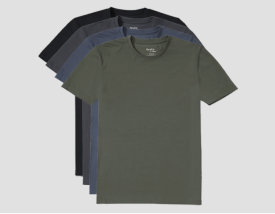On the best days, sweating at work is uncomfortable and embarrassing. But in anxiety-inducing scenarios, it only gets worse. Important presentations, job interviews, or finally getting face-to-face with your boss - nervous sweat stains can make you appear to lack confidence or even appear untrustworthy.
What can you do to stop nervous sweating at work?
Prepare
If you’re pitching an important client or asking for that much-deserved raise, nervous sweating can be a big problem. There are moving parts and variables that you just can’t control, and that’s enough to make anyone nervous.
Preparation is your best weapon against anxious sweating. Good preparation lets you have confidence over what you can control, keeping nerves at bay, and improving your performance.
Show up early, have notes, and have clear objectives. You can even practice for friends, family, or roommates to help get you comfortable. Preparation helps you feel comfortable and confident in your delivery, so you can get through the most nerve-inducing meeting - no sweat!
Avoid Certain Foods
A cup of coffee is comforting. Many of us use it to kickstart our day with a boost of energy and familiarity. But, overindulging in caffeine provokes the central nervous system, springing our sweat glands to life. If you’re already worried about nervous sweating, you may want to skip the morning coffee altogether.
It’s not just caffeine that sends our sweat glands into overdrive. All sorts of foods can leave you with unfortunate sweat stains. Some key foods to avoid include:

Use Calming Techniques
If you really want to stop anxious sweating, you need to address the anxiety. Learning ways to find and maintain a sense of calm can make all the difference. Calmness techniques don’t come naturally to everyone, but anyone can learn them. If you’ve tried them before without success, consider giving them another shot. A little bit of practice goes a long way.
Yogic breathing is a fantastic technique. Its calming effects are both physical and mental. The slow, mindful breathing soothes the parasympathetic nervous system, reducing stress and inducing relaxation. Try this simple 3-step breathing technique:
- Find a comfortable position to sit or lie down.
- Breath deeply through your nostrils, drawing into the diaphragm.
- Exhale slowly through your mouth, removing all of the air.
Other mindfulness approaches, like meditation and visualization, can have similar calming effects. There are many free apps and videos online that can help guide you through these processes.
There are even passive things you can do to induce calmness at work. For example, office plants are proven to relieve stress and anxiety. It’s a small change to make that can have long-lasting effects with minimal effort on your part.
Clothing
Nervous sweating can’t be stopped outright, but it can be controlled. The best approaches are two-pronged, both reducing and managing sweat. Moisture-wicking shirts are an ideal option for this. They’re an effective, affordable, and easy solution.
Sweat-wicking fabrics are breathable, which helps to reduce sweating in the first place. Any sweat that does form is absorbed into the specialized fabric, which disperses it for rapid evaporation. This gets rid of sweat, saving you from embarrassing stains and odors.
Although there are lots of clothes for sweating on the market, they aren’t all created equal. Some of the things you should consider when choosing sweat-resistant undershirts include:
Shop Performance Workwear to Stop Nervous Sweating
NeatApparel is a new approach to sweat-resistant apparel. We balance comfort, moisture-wicking technology, and appearance so you can go sweat-free in style.








